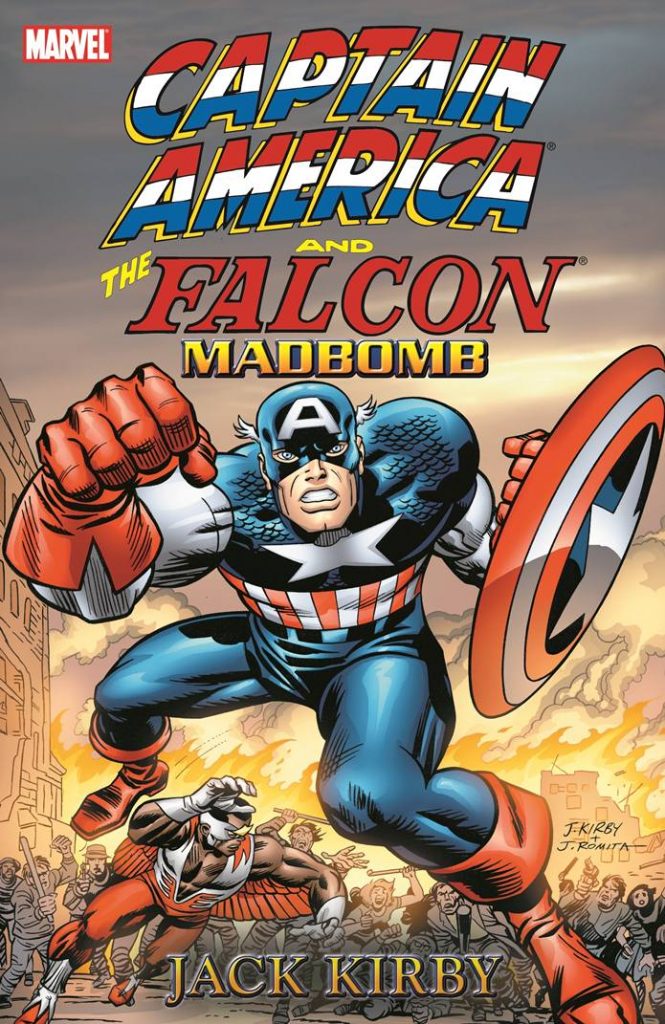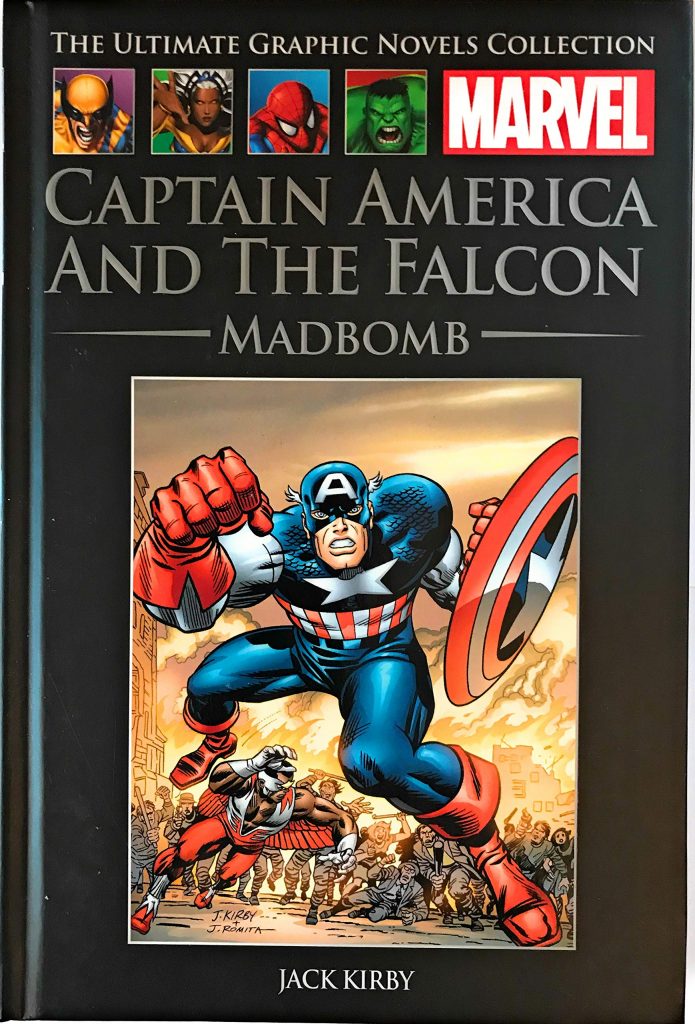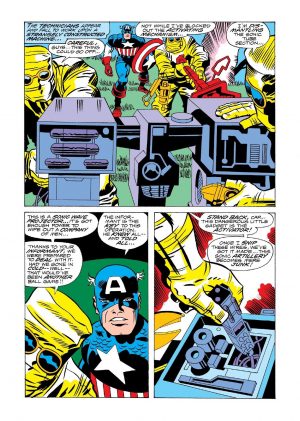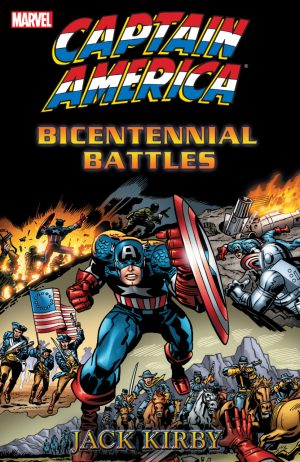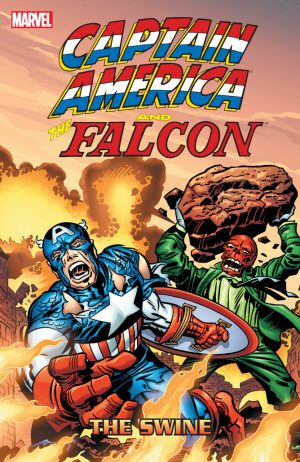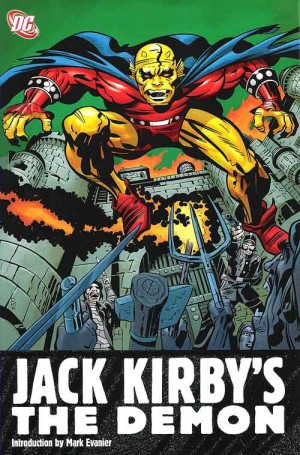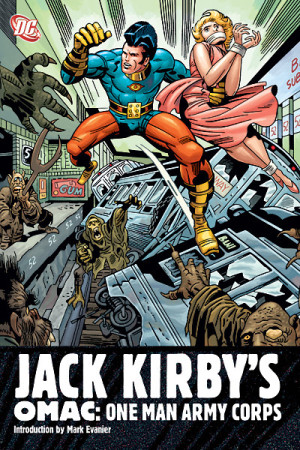Review by Ian Keogh
When Jack Kirby began working for Marvel again after a five year absence his highest profile assignment was to write and draw the adventures of Captain America, the hero he’d created with Joe Simon back in 1940. In 1975 he had the misfortune to follow Steve Englehart’s writing on Captain America, and fans had become used to their superheroic adventure being spliced with political and social commentary. It’s not fair to say Kirby wasn’t interested in that, but his version of it was very differently rolled out. To him Captain America was an all-action patriot, and the social commentary rested on how he represented the nation. Fans of the previous incarnation in the 1970s were extremely vocal with their criticism, so having Kirby’s work independently collected is welcome, as much of it deserves reassessment.
‘Madbomb’ however, despite the fantastic title, is the weakest material of Kirby’s two year run. It’s conceptually dense, and in 1976 the idea of an eight chapter saga working toward the celebration of Captain America’s 200th issue alongside the US bicentennial was extraordinarily ambitious. It’s also saggy in places with a lot of rushing about to no great purpose, and the less said about Henry Kissinger’s involvement, the better. A small version of the title device placed in New York emits waves affecting the brain, turning everyone in the vicinity, apart from Cap, ragingly aggressive. The master villain’s plan is to plant a scaled up Madbomb affecting the entire nation. He’s a man who regrets the US ever became independent, and the Madbomb is part of a plan to restore an elitist structure based on birth status to the USA.
That being the case, it might be expected that those involved in the plot would recognise Captain America and the Falcon after all their years of high profile heroics, one of several logic lapses. If the plot doesn’t thrill as intended, it certainly has thrilling moments, and the real thrill is Kirby’s art. He’s enjoying what he’s doing, and that enthusiasm transmits across time. It’s action-led, with Kirby delivering one great pin-up page or spread after another, and his thugs in colonial costumes still look great, if not quite compensating for the S.H.I.E.L.D. agents looking as if they’ve been shipped in from the 1940s.
In the middle of this collection is the one unqualified success, a radical departure and an oasis of sanity as Kirby delivers what he labels a love story. It is, and it isn’t, but it’s touching and relevant as Steve Rogers opens himself up to someone also trapped. Eventually, though, Kirby never really sells the idea that such a ragtag bunch of entitled old names could really give S.H.I.E.L.D. the runaround for so long. The ideas are there, but the failings wouldn’t be as obvious in a more compressed story.
Madbomb’s content is also available in the hardcover tenth volume of the Marvel Masterworks Captain America, where it’s combined with the title story from the following Bicentennial Battles, and in black and white on pulp paper as Essential Captain America Vol. 5.
